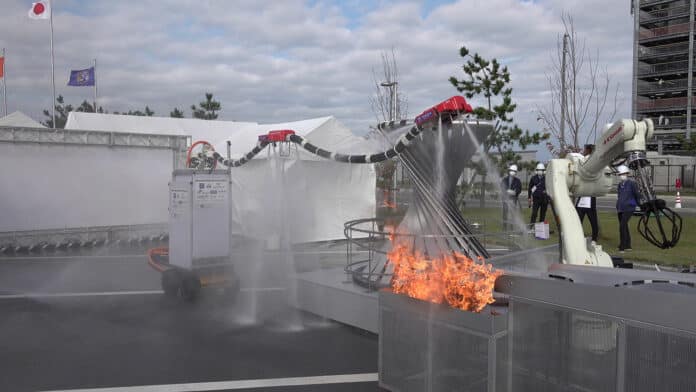In a fire outbreak, firefighters are expected to rapidly extinguish fires to stop the spread of damage and prevent secondary disasters. Now, a team of Japanese researchers has developed the Dragon Firefighter, a flying firehose that can aid human firefighters in putting out the most dangerous fires.
The researchers have designed Open Science, which means that other researchers around the world can use the plans to build their own Dragon Firefighters for the benefit of all.
Researchers from Professor Satoshi Tadokoro’s lab at Tohoku University began working on similar flying robots in 2016. Prior to and during development, the team collaborated with Japanese firefighting professionals to better understand their needs for firefighting.
“We here present a prototype of a four-meter-long, remotely controllable flying firehose robot, engineered to safely and efficiently extinguish fires in buildings by directly approaching the fire sources,” said joint corresponding author Dr Yuichi Ambe, an assistant professor at Osaka University.
The Dragon Firefighter’s firehose is propelled at an elevation of two meters above ground level by eight controllable jets of water spouting from its center and head. The firehose can change shape and be oriented towards flames, steered by a control unit in a wheeled cart behind. The cart is connected through a supply tube to a fire truck equipped with a substantial 14,000-liter water reservoir.
The nozzles of the hose spout water at a rate of 6.6 liters per second with a pressure of up to one megapascal. The hose’s tip also contains a conventional and thermal imaging camera, which can help locate the fire.
The inaugural testing of the Dragon Firefighter took place during the opening ceremony of the World Robot Summit 2020 (WRS2020), held in September 2021 in Fukushima. The robot demonstrated its firefighting capabilities by successfully extinguishing [49 min 00 s to 51 min 00 s] the ceremonial flame, consisting of fireballs lit by another robot, at a distance of four meters.
Since the demonstration at WRS2020, researchers have continued to work on improving our Dragon and have learned many new things. For example, they found that the original passive dampening mechanism, which counters oscillations of the Dragon Firefighter’s body, was impractical due to the extended preparation time required for flight. In addition, it was observed that heat from fires can cause detrimental plastic deformation in outdoor applications of the corrugated tube that holds the water hose and electric cables.
Other improvements detailed in the study include better waterproofing, a nozzle unit capable of handling a wider range of net forces, and an improved mechanism for channeling water flow. But further developments are in the pipeline.
